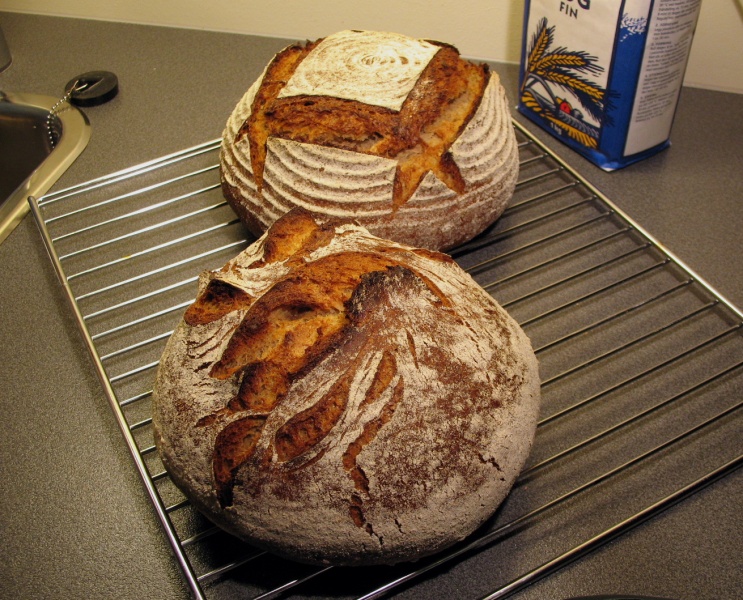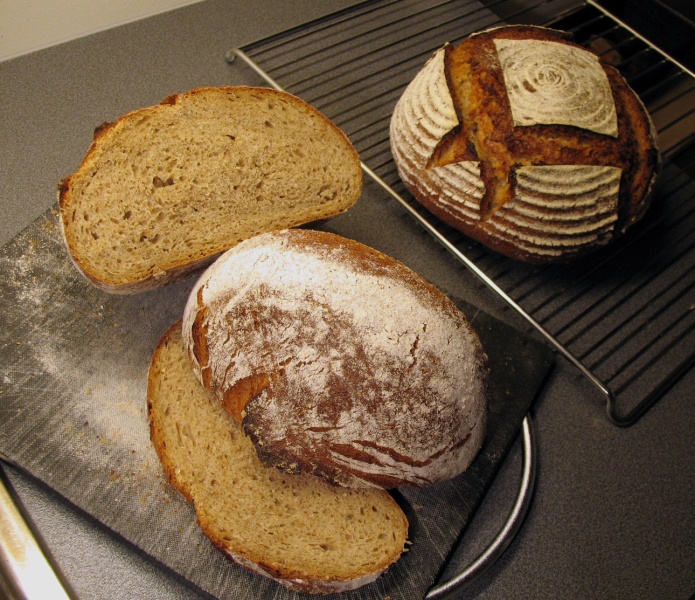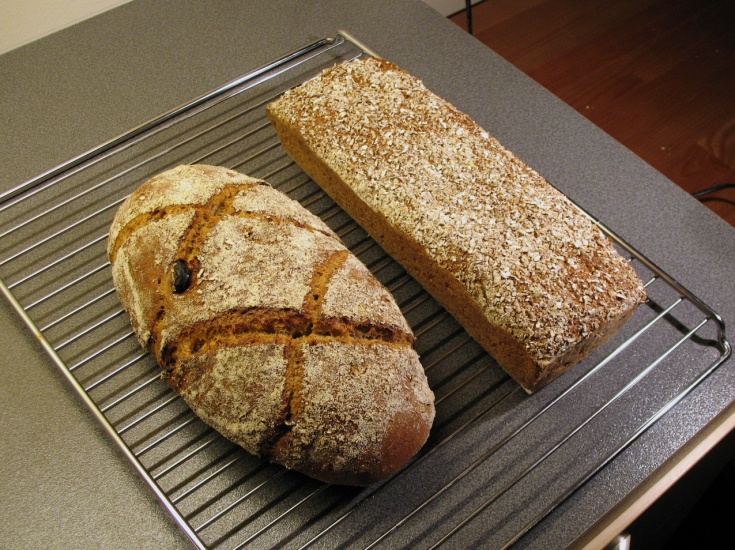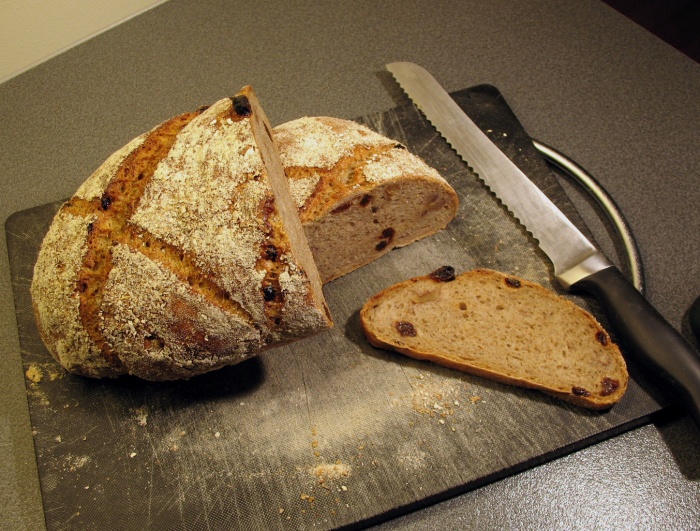Everyone's got a little Holden Caulfield in them, I presume?
I thought I should put up some of the recent loaves I've baked, and first are two 40% rye boules that are loosely based on Hamelman's flaxseed rye with old bread soaker. David, Eric and myself loved the original recipe, and David put up a detailed breakdown of it on his blog (by the way, reading through David's blog entry again, I believe that the blog entry should list fresh yeast, not instant). This time, I wanted to combine the complex flavour of the stale bread soaker and acidity of the sourdough with something sweet. I have a hopeless, irrepairable sweet tooth, so that's why!
The sweetness I had in mind was something along the lines of the classic Borodinsky rye. I've made some Borodinskies before, and I've found a combination of coriander seeds, honey and barley malt extract to be truly divine. So, I started with Hamelman's recipe for the flaxseed rye, and a) omitted the flax altogether, and b) reduced the overall hydration to 70%. Then, c) added 1% coarsely crushed coriander seeds, and d) 3% honey and 3% barley malt extract. I also omitted the (optional) seed coating mentioned in Hamelman's formula.
I shaped two 1kg boules, and let one proof as usual in a brotform, and let the other proof seam side down. Due to honey and barley malt extract, I watched the dough carefully during final proof, and found that 45 - 50 mins. was sufficient for my dough. I also found that the crust quickly gained colour during the bake (also due to honey and the malt extract), so I reduced the temperature a bit quicker than usual. I ended up with 250dC the first 10 mins. (with steam) and then gradually lowered the temperature towards 205dC for 35 mins. more. Total baking time approx. 45 mins. I wanted a dark, thick crust, a deep, nutty brown colour, that will enhance the overall aroma of the loaves. So if you want to try it, don't shy away from giving it a full bake, but do watch it. You want nutty brown, not charcoal black :)


A friend of mine requested a Vollkornbrot, so I baked him the one from "Bread", shown on below on the right. No crumb shot unfortunately... but he said it satisfied his Vollkorn cravings, so I take that as a good sign. Below on the left is Hamelman's sourdough rye with raisins and walnuts. Sweet tooth again, I know...

I shaped it as a "viverais": This shape is shown in Suas' ABAP, and on p. 13 in this .pdf. You shape it into a batard and (yes, this step had me hesitating a few seconds - mangling that pretty batard...) divide it in seven pieces by cutting two X's in the dough. Pretty harsh treatment, I agree, but the loaf did recover some during final proof, and the separated pieces baked together nicely in the oven. It produced an appealing, rustic look, I think!
PS: A slice of this is a perfect match for goat cheese.
